Urban Media Network Essay: Should Importing of Electronic Waste be Illegal in China?
Posted: June 16th, 2010 | Author: Mukda Pratheepwatanawong | Filed under: waste industries | No Comments »Part 1: Introduction
Mass consumerism in China has been caused by the rapid industrialisation of the country (Zehle, 2008). Economic growth leads to an increase in environmental impact (Alier, 2000). Electronic waste (e-waste) represents the biggest and fastest growing manufacturing waste in China (Chan and Ho, 2008).
With the rapid development of technology, many people can afford to often buy and change basic electronic items. From a consumer perspective, people tend to think about value for money and functionality purposes before they buy electronic items, very few consumers and perhaps producers, take into consideration of the result of the environmental issues caused by the production and the dealing with electronic items.
There is no direct definition of ‘e-waste’ because e-waste has different definitions to different people in different countries (Terazono et al, 2006). A 2nd hand electronic item for a person might be considered as e-waste for another person. The problem of defining ‘e-waste’ makes the enforcement of e-waste difficult to deal with (Wu, 2009). However, this essay defines ‘e-waste’ as any electronic items which have been used and the owners do not want to continue using them anymore. This could be due to broken parts items or changes in the consumers’ behaviour.
Before 1996, many countries exported e-waste to China. E-waste has been a major problem in China as there has not been effective control in dealing with e-waste. According to Tong and Wang (2004), China has become the largest receiver of e-waste from the developed countries. The use of unskilled labour and inappropriate technology make it cheap for the country to get rid of e-waste (Tong and Wang, 2004, Terazono et al, 2006). However, since 1996, it has been illegal to import e-waste into China and this was implemented in order to manage the environmental impacts.
E-waste from other developed countries could be 2nd hand products to China. Levin (2009) reported that Wang, a spokesman for the China National Resources Recycling Association said that the “Chinese tradition is all about saving and being thriftyâ€. They prefer to repair and refurbish e-waste before throwing them away. However, whether they could repair or reuse the e-waste or not, in the end, the items would still belong to China, which increases the quantity of e-waste in the country. Furthermore, some Chinese electronics repairers still choose to import e-waste from other countries in order for them to repair and reuse or resell them to local Chinese consumers.
The visit to South Gate Market, Ningbo (Picture 1)enabled the Urban Media-Network students (09/10) to realise that there are many electronic items, especially televisions (Picture 2) lying around the market and it is assumed that they are unwanted electronic waste and are waiting to be recycled.






Picture 1: South Gate Market, Ningbo
Picture 2: Unwanted Televisions
This essay argues that importing of e-waste should be illegal in China. Part 2 explains why creative industries have been viewed as being irresponsible for e-waste. Part 3 looks at the reason why the importation of e-waste still exist in China though it has been illegal to do so. Part 4 evaluates the consequences of importing e-waste into China. Part 5 concludes that the importation of e-waste should be illegal in China unless the Chinese government can regulate the e-waste industry and control the impacts of dealing with e-waste have on the environment and people. This part includes relevant solutions and problems in order to maintain or reduce the amount of e-waste in China.
Part 2: Cause of Electronic Waste – Irresponsible Creative Industries
Creative industries are irresponsible for their creative products. According the Creative Economy Report (2008), the United Kingdom Department of Culture, Media and Sport (DCMS, 2001, 11) proposed that creative industries are industries which require “creativity, skill and talent which has the potential for wealth and job creation through the exploitation of their intellectual propertyâ€. Examples of creative products include electronic items such as IPODS, IPHONES, televisions, printers and laptops.
The main objective for most electronic companies is to launch advanced products, with modern designs, containing high speed technologies and high resolutions. Few companies pay attention to what happens to the previous products that consumers bought from them. Many companies think that as long as they can make profit, gain customer satisfaction and create brand reputation in the market place, they will launch the products.
Consumers have low environmental awareness on electronic production and e-waste recycling (Meng, 2009). The interviews with electronic consumers that were done for this research (2010), found out that the main factor which influences the consumers’ decision before they buy an electronic item is value for money, which includes factors such as price, quality and performance.
Electronic waste is a major issue to e-waste factories and people who lives around those factories, but it has NOT been a major issue in creative industries. The main page of most creative industries websites consists of all the relevant information that consumers have to know including, the price, model and product specification. However, the main page contains limited information about the company being responsible of their products at the end of the product life-cycle. Consumers who are environmental friendly will need to search for the ‘Corporate Responsibility’ link in order for them to gain more information about how the company is responsible for their products at the end of its life cycle. As a result, very few consumers would search for such icon and this reflects that not many consumers care about e-waste.
Regarding Apple’s website (as shown in Picture 3), there is an icon that links consumers to view the Apple Recycling Programme, which describes the possible ways that consumers can do in order to recycle different parts of Apple products. For example, consumers can bring Apple batteries back to any of the Apple’s shop and it will be recycled for free. This shows that the company is trying to be responsible for its products when the products have reached the end of their life- cycle.




Picture 3: Apple Recycling Program
On the other hand, Dell’s website had announced general information about being responsible with their products (Picture 4). However, there is no specific information on what consumers could do in order to recycle Dell’s products.
Picture 4: General Information about Dell being Corporate Responsible
Regarding the interviews with one of the 2nd hand electronics shops (2010), the researchers found out that individual consumer gets rid of their electronic items by selling them to the local junk man. Then the junk man will sell them electronic components to local wholesaler for them to deal with. If the shop receives any electronic items from the junk man, they would try to repair them and sell them as 2nd hand products. If the item reached the end of its life-cycle, they would separate the components into parts which could be sold for money and those parts which could be recycled. The price of components would depend on the market. There would be trucks from Taizhou and Guangzhou coming to collect the items. These two cities contain the major recycling factories in China.
Picture 5: 2nd hand electronics lying around 2nd hand electronic shop
Improper ways of dealing with electronics could cause adverse environmental problems such as pollution and production of toxic air in the environment (Tong and Wang, 2004). Therefore, the researchers asked the staff whether there are environmental regulations in the e-waste recycling industries and they said there are regulations which large factories have to meet. In terms of labour working conditions, they are aware of the way e-waste recycling factories deal with its e-waste having impact on workers’ health but they did not mention about any specific health issues. At the end, the researchers were told that no one really cares about how much profit they make in the business or whether they are dealing with the impact of e-waste on the environment and workers’ health. As long as money could be earned, the business continues.
The researchers concluded that due to the rapid innovations of electronics, the price of 1st hand electronics have dropped dramatically. If electronics are bought for personal use, consumers will choose to buy 1st hand products as the price difference between 1st hand and 2nd hand is not much. Therefore, refurbishing and reusing 2nd hand electronics is being environmental friendly but if 2nd hand electronics are sold at inappropriate prices, then 2nd hand products will eventually be another category of e-waste.
In short, creative industries are the initial cause of e-waste. Creative industries have produced items which caused environmental problems for recycling factories to deal with them. Because electronics are things which consumers have to buy and use, there is nothing much that a consumer can do to influence the production (said by one of the electronic consumers). Therefore, as e-waste has not been a major issue to creative industries and consumers, the responsibility of managing e-waste is left to the e-waste recycling factories.
Part 3: Why Importation of Electronic Waste Still Exist in China?
Soft logistics regulation is another cause of the continuous existence of importation of e-waste. Rossiter (2009) defined logistics as “the management of global supply chains and labour regimesâ€. This could include any software used to manage, control or input container information, keeping track on the containers and any performance measurement software that measure workers’ actual working hours and workers’ work performance.
Rossiter (2009) further questioned the failure of databases on the logistics containers information that still allows e-waste to be shipped into China even though it is illegal to import e-waste. This is because people involved in the shipment have successfully ‘disguised metal scrap and electronics products’ (Tong and Wang, 2004, 641). They have estimated that 700,000 tons of e-waste was imported through the Yangtze River delta in Beijing Zhongse Institute of Secondary Metals (2002). However, the methods used to estimate the amount of e-waste is not compatible among countries (Terazono et al, 2006). Therefore, there is a problem in relying on the e-waste figures.
Recycling factories deal with unwanted steel, copper and unwanted semi-deconstructed metal waste (Wu, 2010). However, small amounts of e-waste are hidden in containers which came from aboard and this does not cause problems in passing through custom, but sometimes they are forfeit (said by one of the recycling factories). This means that there have not been full inspections on containers entering into China and exporters have not been declaring honestly about what they are exporting to China.
Picture 6: EGO Digital Plaza
Therefore, due to soft logistics regulations, there has been continuous existence of the importation of e-waste into China.
Part 4: Discussion – Should Importing of Electronics Waste be Illegal in China?
Importation of e-waste into China has both positive and negative sides. Part 4.1 argues that if importing e-waste into China is made legal, the importation will bring benefits to individuals and China. Part 4.2 reflects that because dealing with e-waste can cause environmental issues and health problems, the importation of e-waste into China should be illegal.
4.1: Importation of E-waste should be Legal
Due to the amount of land, space and workforce that China has, many companies have outsourced their electronic products to China for production and therefore, many items have been labeled ‘Made in China’. As China has taken the responsibility of the production stage, it should also take the responsibility of dealing with the recycling stage. Also, the 2008/09 world economic crisis had impacted the recycling market adversely and therefore many Chinese people ended up being unemployed. Importation of e-waste should be legal due to the following reason.
Reason 1: Employment Opportunities
Importing e-waste will give working class people employment opportunities to work in the e-waste factories (Terazono et al, 2006). In terms of individual benefits, people will have their own incomes and savings, which can help to pay their debts and resolve their poverty issues. In terms of the whole country’s benefits, the unemployment rate would be reduced. This essay assumes that developed countries are waiting to export e-waste to China as it offers a reasonable price. With a large workforce being unemployed, if importing e-waste is made legal in China, the unemployment rate would decline and the economy is likely to grow further.
Reason 2: Individual Consumption Benefit
By importing unwanted electronic items, Chinese people could gain consumption benefit (as found out from the fieldtrip). In other words, e-waste in other countries is money for China. Wu (2009) reported that there are illegal e-waste factories in Shanghai to refurnish the imported e-waste and sell them as 2nd hand electronics. This means that the imported electronics could be reused in China but it must be sold at a reasonable price. If this system is managed and controlled effectively, it will be an environmental benefit to the whole world as well.
Picture 7: E-waste or 2nd hand electronics?
In short, if China imports e-waste from other countries, it could bring benefits to individuals and the Chinese economy. However the effectiveness of dealing with electronic waste would highly depend on the level of strictness. As being environmental friendly is costly (according to Wu (2009) equipments to treat e-waste could cost as much as 15 million RMB per company), electronic producers and e-waste recycling factories would not take this issue into consideration.
4.2: Importation of E-waste should be Illegal
Even though dealing with imported e-waste brings benefits to the Chinese people and the Chinese economy, however, if they are not dealt with in appropriate ways, the ‘contamination of electronic production’ (Zehle, 2008) could cause problems as explained below.
Reason 1: Health and Safety Regulations
Chan (2009) proposed that the three major issues of labour condition in e-waste industries are: job security, the use of contingent labour, and the fair and fixed-term labour contracts. These include the danger of the working environment, hiring child labour and unpaid overtime work.
According to Maxwell and Miller (2008), the process of e-waste recycling in China has adverse impacts on the environment, human health and human safety because materials such as plastics and metals contain cadmium and mercury could affect the biological development of children. In additional to Maxwell’ and Miller’s (2008) opinions, if e-waste recycling factories still do not pay immediate attention to the basic protection against toxic metals and if it does not care about the workers’ lives, other countries should continue to stop exporting e-waste to China.
Rossiter (2009) appreciates that improving labour conditions could cost the company a lot of money. As a result, improving labour conditions is a cost to the company while it is a benefit to many workers. In order to raise the standard of working conditions, solving the health and safety issues of e-waste factories, the government play a significant role in collaborating with the electronics producers and e-waste recycling companies.
Reason 2: Damaging the Environment
Improper ways of dealing with e-waste not only result in significant negative effects on the workers’ health and people living around e-waste recycling factories, but it also affect the environment (Tong and Wang, 2004). For example, the burning of plastics components or other non-recyclable materials sends toxic gas into the air (Tong and Wang, 2004). This damages the environment and affects both workers’ health and the surrounding residents.
As there is no proper control in the e-waste industry (Terazono et al, 2006), there is no reliable methods to obtain the data on the quantity of e-waste being imported or the quantity of e-waste China produced locally (Maxwell and Miller, 2008). Therefore, it is difficult to convince people on the adverse impact that e-waste is harming on the Chinese environment.
In short, due to the inappropriate technologies and ineffective ways of dealing with e-waste in China, many people’s health and the environment are affected by the impact of e-waste. Therefore, the importation of e-waste in China should be illegal in order to maintain or limit the quantity of e-waste in the country so that the impact does not rise.
Part 5: Conclusion and Discussion
Should importing of electronics waste be illegal in China? The answer is the importing of e-waste should still continue to be illegal in China.
Furthermore, there should be stricter control in customs so that the quantity of e-waste in China will not rise. With this policy, environmental issues and people’s health problems will not be on the increase.
However, if a stricter policy is enacted resulting in little of no e-waste entering China through imports, as a consequence, many workers who work in the e-waste industry will find themselves without jobs.
Even though e-waste recycling factories have been using improved technologies and have intensive management, the government could still further mitigate environmental issues (Chen et al, 2010, 366).
Firstly, there should be deeper collaboration between government, producers, consumers and recycling factories. For example, when consumers want to recycle their unwanted electronic items, the government has to ensure that there are recycling facilities available for people to do so (suggested by an electronic consumer). If not, consumers might just put the electronic items into an ordinary bin and it would be mix with other items, which makes it less likely to be identified as e-waste later.
Secondly, as the initial cause of e-waste issue comes from creative industries, the government should increase incentives for producers to change the earliest stage of material flow (Tong and Wang, 2004). ‘Corporate Responsibility’ increases brand recognition and reputation of the company. Producers should take responsibility for the products which have reached the end of the life expectancy in order for their brands to have better reputation. Moreover, the government should educate consumers about the concerns of e-waste to increase the people’s awareness. This communication could be done through media by showing the possible impacts and environmental transformation (Zehle, 2008).
Thirdly, the government could subsidise creative products’ materials and use materials which are less harmful to the environment (Wu, 2009), because most producers find it challenging to accept the additional of financial issues for disposing their end-of-life products (Tong and Wang, 2004).
Lastly, this essay would like to suggest that only if the Chinese government could regulate and manage the domestic e-waste in China, then it should change the regulation for the country to be able to import e-waste legally from other countries in order to increase employment and consumers benefiting from gaining 2nd hand products as stated in Part 4.1.
References
Chan, Jenny and Ho, Charles (2008) The Dark Side of Cyberspace: Inside the Sweatshops of China’s Computer Hardware Production, Berlin: World Economy, Ecology and Development (WEED).
Chan, Jenny (2009) ‘Meaningful Progress or Illusory Reform? Analysing China’s Labour Contract Law’, New Labour Forum 18 (2): 43 – 51.
Chen et al (2010) ‘Study on adverse impact of e-waste disassembly on surface sedium in East China by chemical analysis and bioassays’, J Soil Sediments 10: 359 – 367.
Davis, Mike (2008) ‘Who Will Build the Ark? The Utopian Imperative in an Age of Catastrophe’, Brecht Forum.
Dwivedy, Maheshwar and Mittal, R.K (2010) ‘Estimation of future outflows of e-waste in India’, Waste Management 30: 483 – 491.
Greenpeace (2008) Chemical Contamination at E-waste Recycling and Disposal Sites in Accra and Korforidua, Ghana.
Levin, Dan (2009) ‘China’s Big Recycling Market Is Sagging’, The New York Times, 11 March.
Maxwell, Richard and Miller, Toby (2008a) ‘Creative Industries or Wasteful Ones?’, Urban China 33: 28-29.
Maxwell, Richard and Miller, Toby (2008b) ‘Ecological Ethics and Media Technology’, International Journal of Communication 2: 331-353.
Martinez-Alier, Joan (2000) ‘Environmental Justice, Sustainability and Valuation’, Harvard Seminar on Sustainability.
UNEP-Vital-Graphics (2004) Vital Waste Graphics. E-Waste: The Great E-waste Recycling Debate, October.
Rossiter, Ned (2009) ‘Translating the Indifference of Communication: Electronic Waste, Migrant Labour and the Informational Sovereignty of Logistics in China’, International Review of Information Ethics 11.
Terazono et al (2006) ‘Current status and research on E-waste issues in Asia’, J Mater Cycles Waste Manage 8: 1-12.
Tong, Xin and Wang, Jici (2004) ‘Transnational Flows of E-waste and Spatial Patterns of Recycling in China’, Eurasian Geography and Economics 8: 608 -621.
UNCTAD and UNDP (2008) Creative Economy Report 2008, http://www.unctad.org/en/docs/ditc20082cer_en.pdf
Waldmeir, Patti (2010) ‘China’s Irregular Recyclers Face Scrapheap’, Financial Times, 15 March.
Wu Jiayin (2009) ‘The Junk Man Cometh: But He Won’t Recycle’, Shanghai Daily, 16 February.
Zehle, Soenke (2008) ‘Network Ecologies: Documenting Depletion, Exhausting Exposure’, Urban China 33: 30-31.
Unpublished Papers and Research
Meng (2009) ‘An Investigation of the Situation of E-waste Recycling: Concerning the Recycling Industry in Ningbo’
Urban Media-Network researchers (2009/10) includes N.Rossiter, Y. Wu, Y.Huang, Y.Lv and M.Pratheepwatanawong


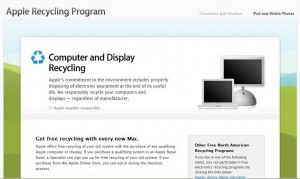


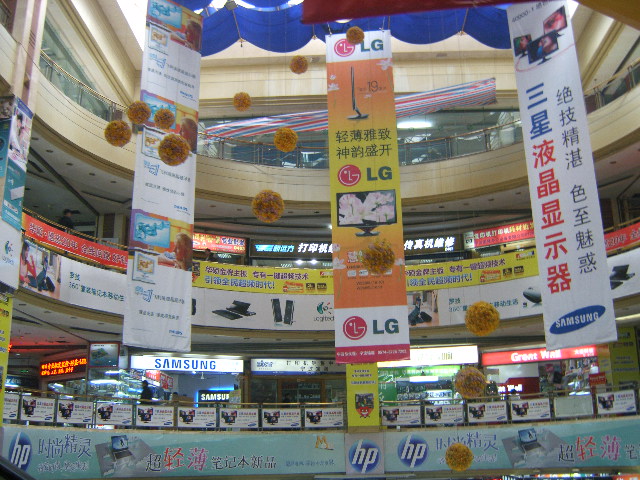





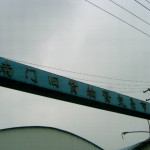
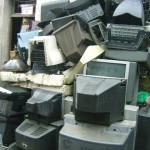
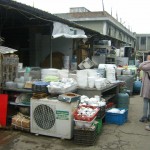
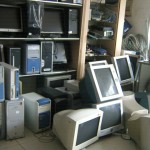




Recent Comments